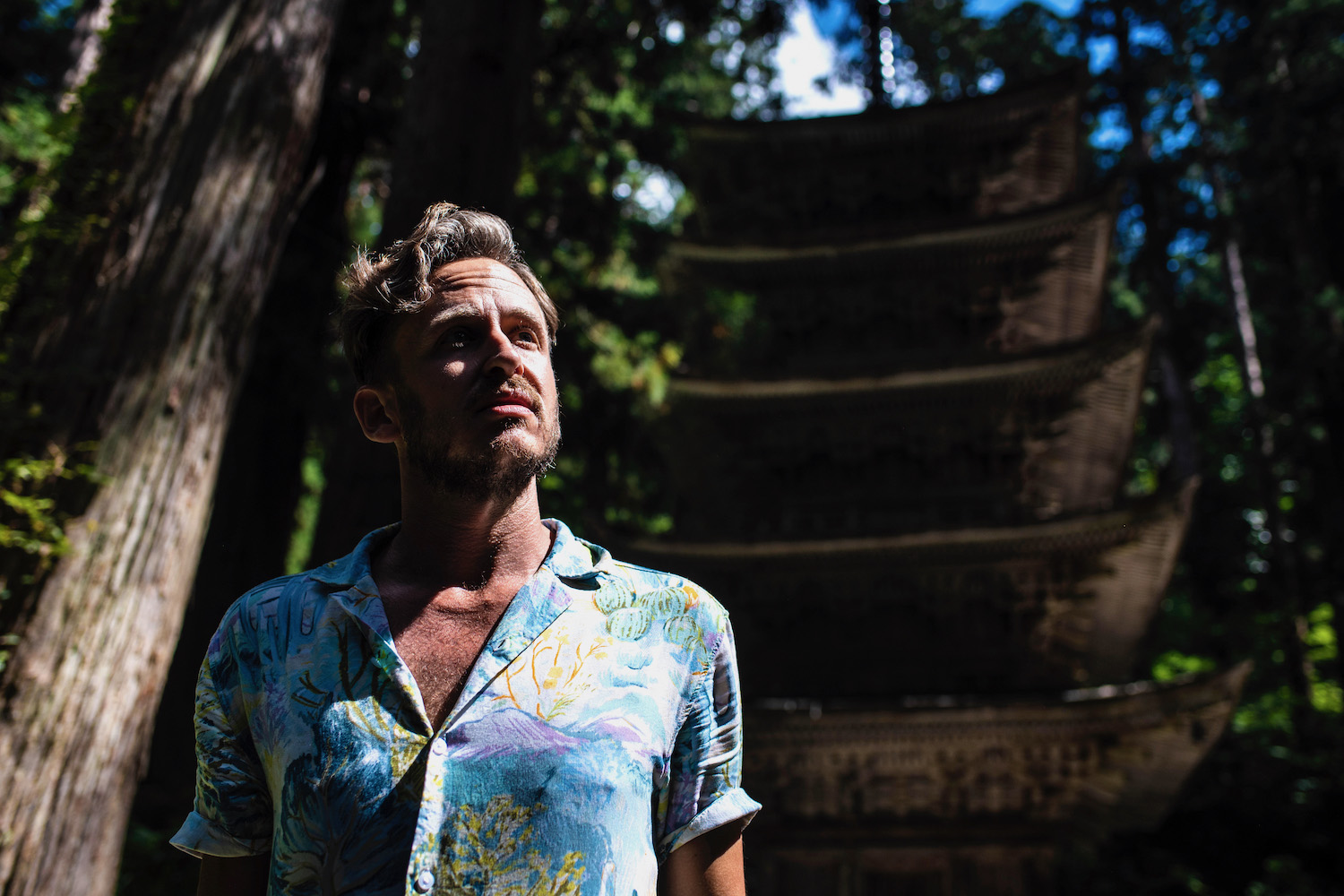On the afternoon of April 4, 2020, the last “normal” flight from Tokyo departed Taipei, where I was living at the time. Although I could hardly see the sky from my patio, large as it was large by Taiwanese standards, I do remember the distinctive roar of jet engines around the time it was scheduled to take off from Songshan Airport, which just minutes from my front door.
This will be over before you know it, I assured myself, having retreated inside to take one of the long, scalding showers I’d found would ease the anxiety of the early-pandemic era. Japan would take a rational, sober approach to covid-19—I was sure of it.
I was wrong.
It would take more than 29 months—until September 7, 2022—for tourists to begin entering Japan, which ended up being one of the last jurisdictions in the world to welcome non-essential travelers. Barriers to entry are still tedious, albeit not nearly as high as they were when I entered the country to study Japanese for six months in the waning days of 2020.
Indeed, after waving my “blue” QR code to show that I needed neither to test or quarantine, I passed through the pearly gates of Narita Airport with virtually zero scrutiny, apart from a few questions about my eVisa, which is so new and (so far) so sparsely used that most of the staff had never seen one.
“How long did it take to get approved?” The cheerful woman who waved me into the immigration line giggled.
It was unnerving—her laughter, and the ease of the entire process. After nearly three years of tension and drama some commentators had termed Reiwa no Sakoku (referencing Japan’s previous two-century closure to the world), I was almost eager to meet resistance.
Instead I got Hello Kitty. Welcome to Japan, read the text between a masked, kimono-clad version on the mascot on a mural just outside the airport’s secured area, which apart from the continued presence of face coverings and absence of foreigners seemed to be functioning more or less as it had in 2019.
Within two hours of stepping off the plane, I’d made my way into central Tokyo, and was sipping a highball at an uncrowded kaitenzushi place near my hotel in Kabukicho. It was one of the ones where the conveyor belt “launches” each maki and nigiri directly to you.
After dinner, which cost almost nothing due to the remarkable weakness of the yen, I balanced my haiba-ru buzz with some uppers (a sugar-free Red Bull) and downers (a CBD drink I still can’t believe is legal in Japan) as I waited for night to fall—for the neon to light up.
Paula Cole’s “I Don’t Want to Wait” was blaring from one of the hostess clubs I passed, and while I doubted it would draw any passers-by inside on this Friday night, its message was certainly not lost on me.
And yet as the night fell and the neon lit up, my muscle memory as a photographer—of course—only kicked into gear just as my second wind was fading, I made a point of walking through Shinjuku’s seedy streets not with jadedness, but with joy. Some things are too good to be true, but not my recent fortune.
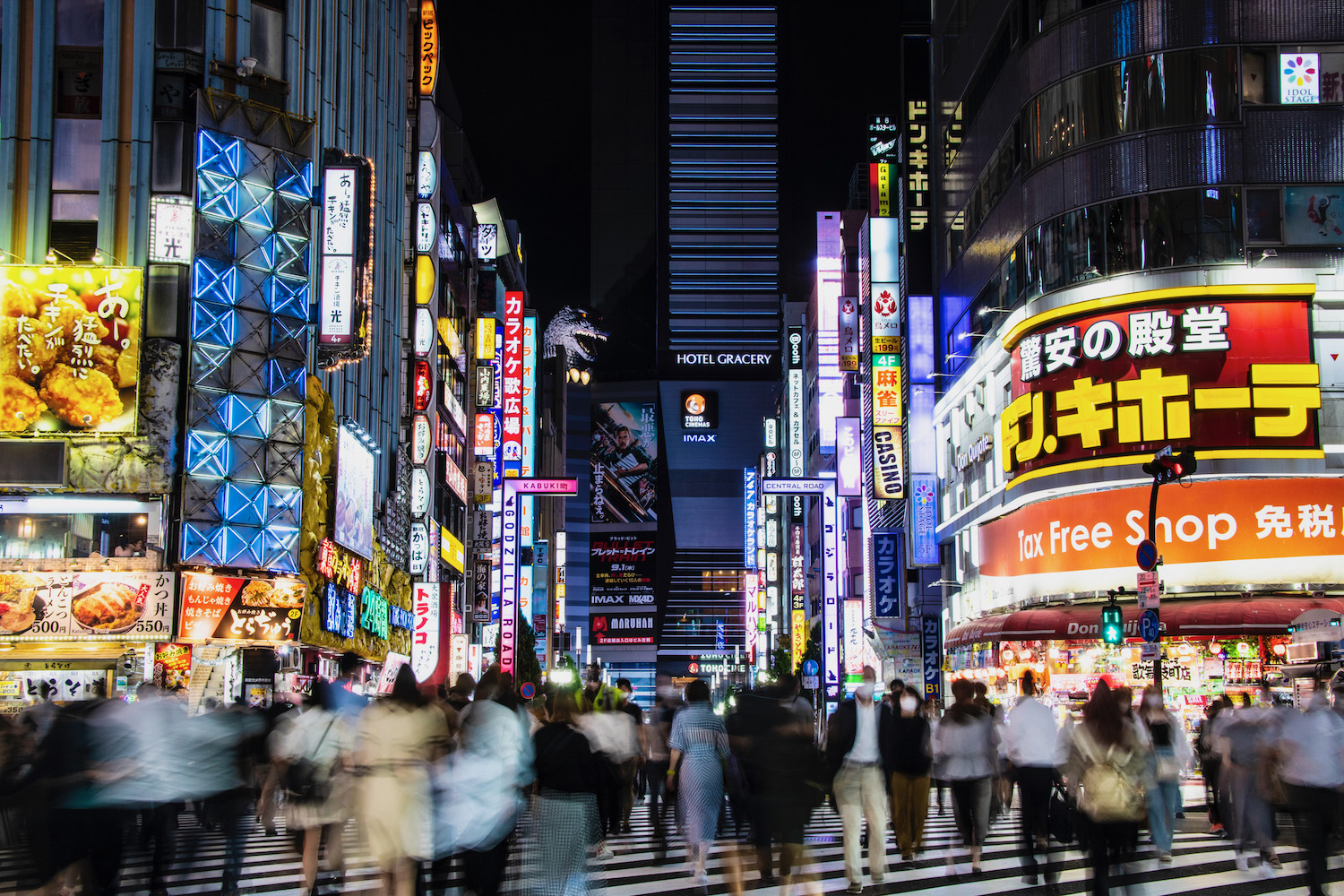
The last time I visited Hachinohe, the city wasn’t ready for prime time.
“Tsunami damage,” the man standing on the mound of earth next to me had said matter-of-factly, when I asked him why the famous Kabushima Shrine was off-limits to visitors. It was the last day of September 2017, and it looked like it was about to pour.
“You mean the 2011 one?” I asked, shocked. We were the only people at the site apart from a construction worker, whose yellow raincoat made the only pop of color in the scene, apart from the vermillion of the two torii gates.
He nodded, and declined to explain further. Still buzzed from the sake brewery tour I’d enjoyed in place of lunch that day, I was content not to push harder, instead vowing to return at some undefined point in the future when repairs would be complete. I walked back toward the bus stop, arriving under its awning just as the sky opened up.
Skies were clear this September—2022, if you’re reading in the future—and warm; there were so many tourists at the shrine that it almost seemed like a different place. There weren’t any birds—the black-tailed gulls that nest here had flown south just weeks earlier—but there also weren’t any lingering tsunami scars, at least not any inadvertent ones: A museum dedicated to the great wave had been built on the former mound of earth.
It was also clear to me, now, why it had taken more than six years to rebuild the sacred site.
Hachinohe, in spite of its sprawl and Shinkansen service, feels provincial, maybe even primitive. Broken footpaths are common even in the city center, arriving in which requires a 10-minute local train ride from the ostensible main station. Although smoke stacks and construction cranes are prominent features of the skyline, it seems unlikely that many industries still flourish here.
Provincial, or maybe just forgotten: I saw only one car parked at the Wayama Bowl the four times I passed it during my long weekend in the city, and I’m pretty sure its owner wasn’t inside throwing strikes. I doubt the doors were even unlocked, or that the salmon-colored neon sign above the moldy stucco facade of the building was even capable of lighting up at night, even if there was a reason for it to do so.
This is not to say Hachinohe is without its charms. The “Dream Bridge,” which towers over Tatehana Wharf and connects the inhabited part of the city to its commercial port, is painted an optimistic canary hue, which sings from every place you can see it.
Hasshoku Market, in spite of being located in a literal rice field miles out of town, is probably one of my foodie experiences in all of Japan, offering fresh seafood donburi, oysters the size of smartphones and bars where you can sample locally-made sake for the unbelievable price of ¥300 per generously-filled sakazuki.
Kabushima Shrine, even without its famous avian residents, is worth every bit of the journey to get there, particularly if you combine it with nearby Tanesashi, whose dramatic cliffs and forests of Japanese pines twisted by the harsh marine wind are the unofficial start of Japan’s Sanriku Coast.
Nejo Castle, in spite of having been reconstructed less than a century ago, nonetheless provides what might be the most accurate existing representation of architecture during Japan’s Warring States period.
Miroku Yokocho’s yatai are every bit as picturesque as the more famous ones you find in Fukuoka and Kagoshima, and the Izakaya that flank the entrances to its alleyways are essentially crash courses in local cuisine, whether you choose delicately prepared saba (mackerel) sashimi, or warming senbei-jiru, a soup made even heartier by the wheat crackers you immerse into its broth around a minute before you’re ready to eat it.
As you can see, I’ve fallen in love with Hachinohe. It may be provincial and forgotten and even primitive, but it is also eclectic and unexplored and unashamed of what it is.
That it took six years for officials to rebuild a tsunami-damaged shrine says nothing about the city and everything about the country, and where its priorities lie. And I’m not just talking about the country’s reputation for being attentive to detail, or for taking its time.
While onboard the crowded local train back from Tanesashi just after nightfall on my last day in Hachinohe, I received a notification. The Kishida administration is finalizing plans to fully reopen Japan’s borders as soon as October, it read.
A day late and a dollar (142 yen, as I type this) short.
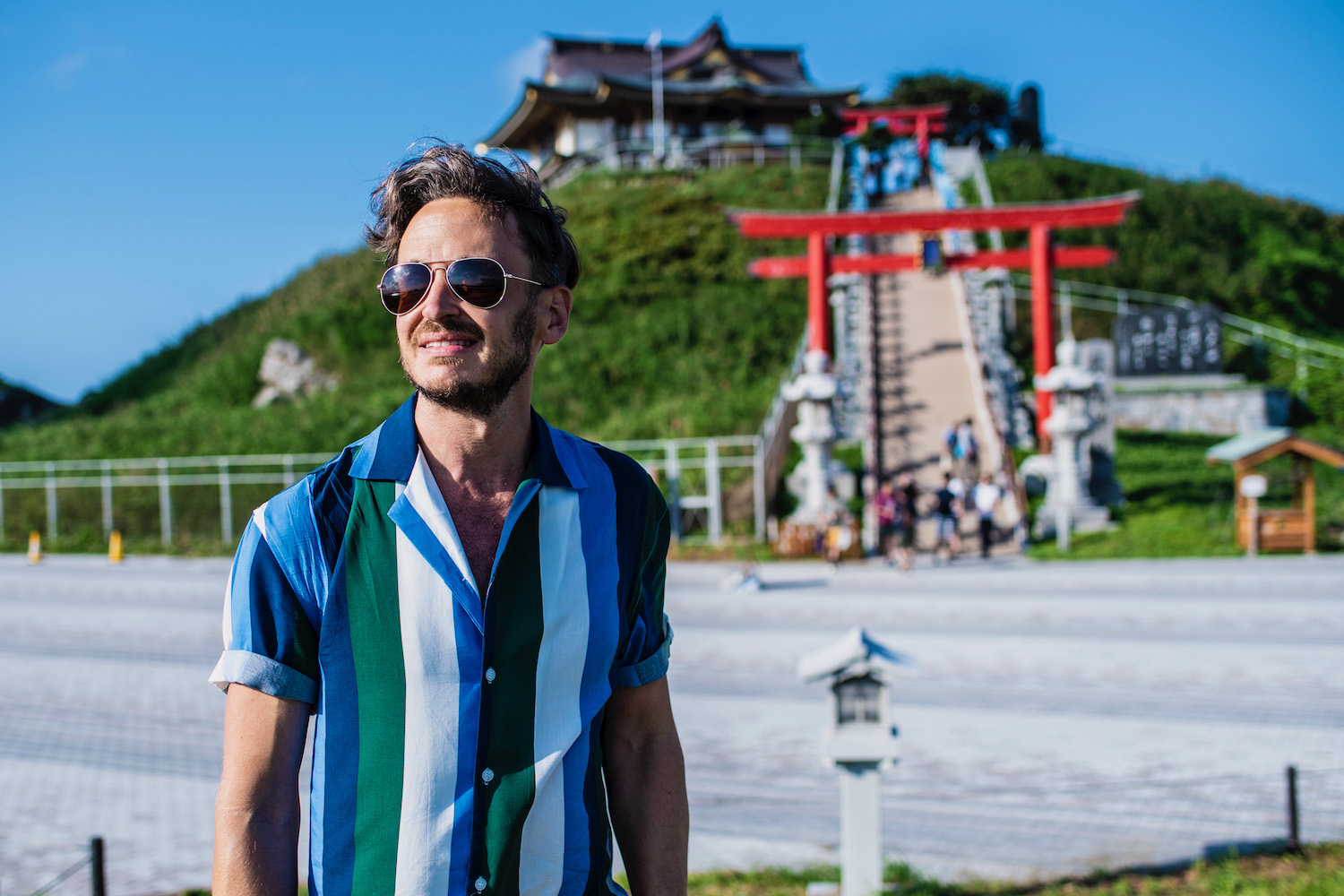
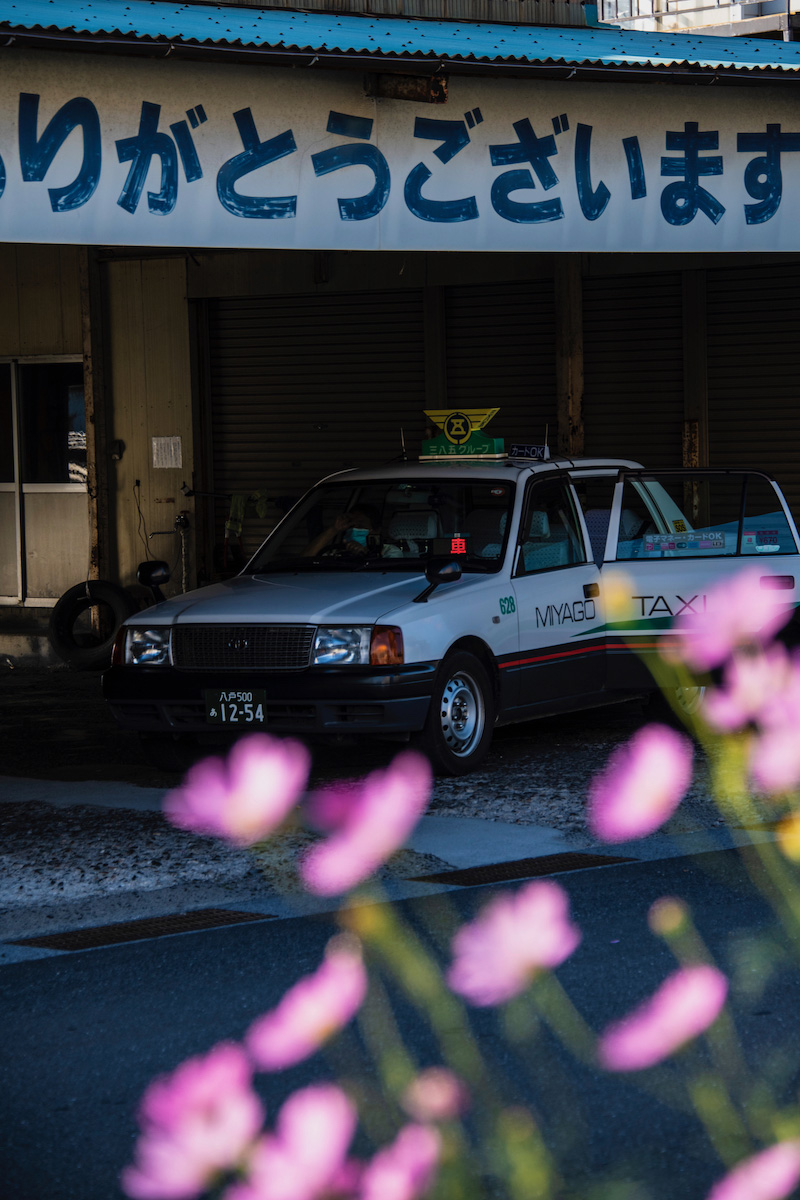
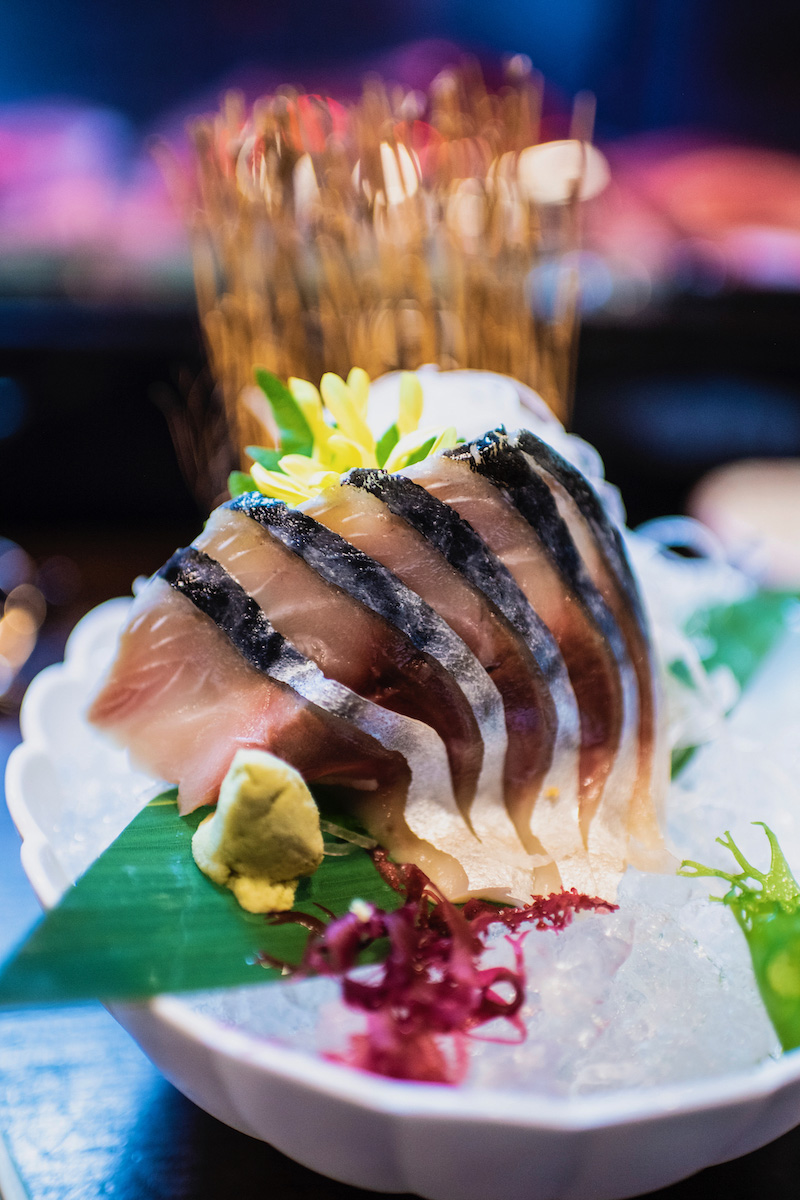
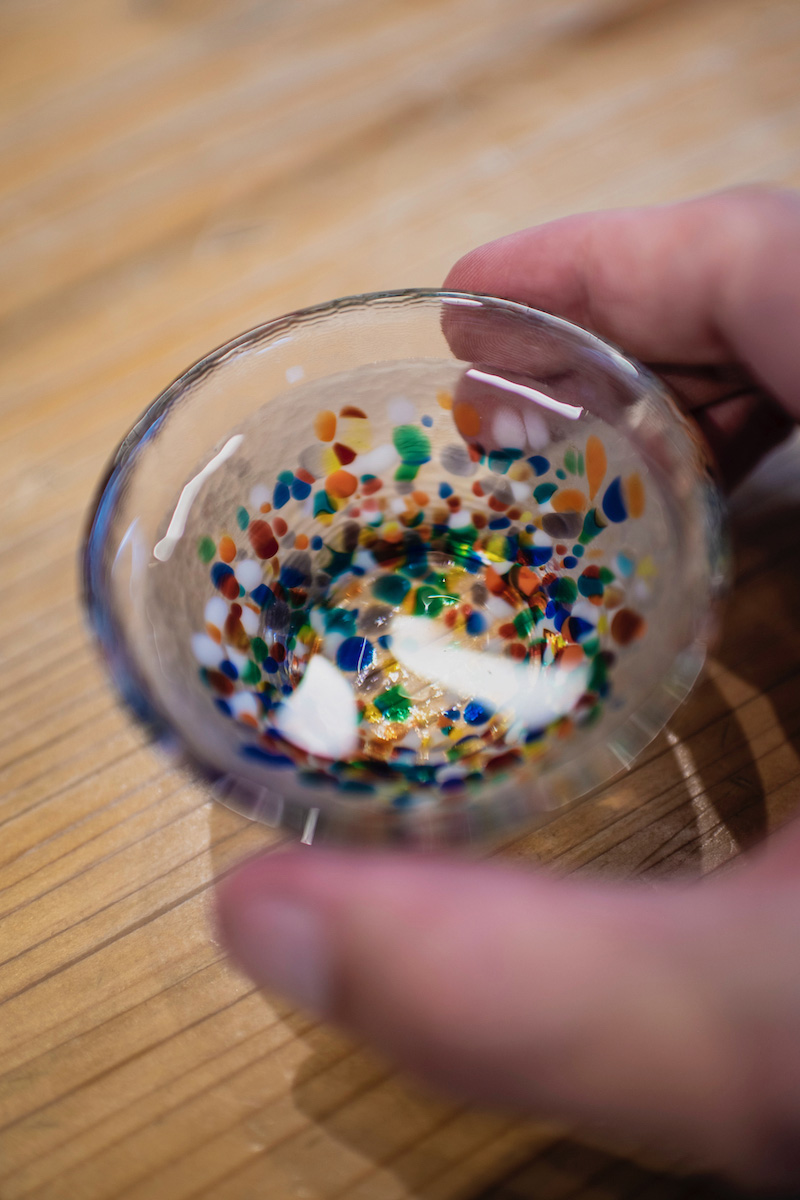
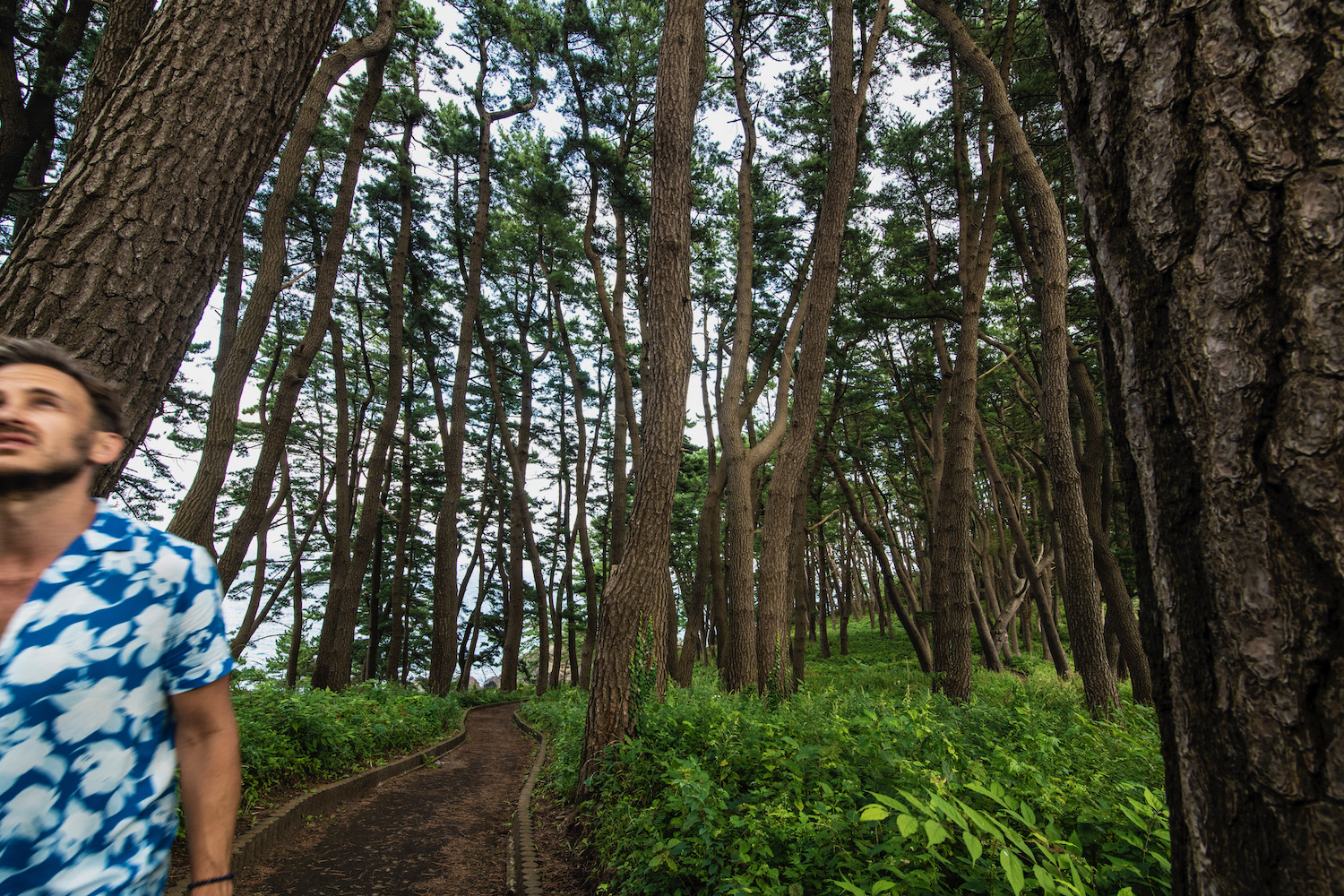
Akita is famous, among the Japanese anyway, for the beauty of its women. And it’s proud. The city advertises this feature—so-called bijin, which literally means “beautiful people”—on posters, which feature images of six seemingly random women arranged as if they’re pop idols. Even discounting the fact that this would be considered sexist in most other countries, it’s a bizarre campaign.
And it’s pointless one, at least in the early 2020s: Virtually every female face in Akita is covered by a mask.
Among foreigners, apart from a certain subset of skiers, Akita isn’t really famous at all. Even for me, Akita has always been an afterthought. I took a hanami trip to see the shidarezakura of Kakunodate because it happens to be Japan’s best-preserved Samurai village; I bathed in Tsuru-no-yu onsen because I wanted to see its milky, blue-green waters with my own eyes. That both (and other places I’ve been) happen to be in Akita was incidental.
This swing through Akita prefecture—and, for the first time ever, Akita city—has been a decidedly intentional one.
The woman in the ramen shop, whom I assume was beautiful behind her mask, seemed puzzled when I handed her the ticket I’d purchased from the vending machine. “Karai ramen dai joubu desu ka?” She asked, sure I’d made a mistake in ordering the spicy noodles.
I waved off—literally—her concerns. “Dai joubu da you. Karai ga dai suki desu!” I wasn’t lying: I do love spicy food, even if the word “spicy” means something tamer in Japan than it does in most of the rest of the world.
What I don’t especially love is ramen. The only reason I settled for it as my first meal in Akita is that when I’d tried to sit down for tantanmen (Akita’s quasi-famous version of dan dan mian, my favorite Chinese noodle dish), the woman dismissively waved me off without explanation. I’d bet money it’s because I’m a foreigner, although I don’t have any evidence to support that.
But back to the ramen: It wasn’t especially spicy, by my standards, although it was tasty. It was also dry—meaning, there wasn’t any soup—which was a nice touch on a scorching day.
If I’m honest, no individual place or thing I saw during my first afternoon in Akita was remarkable to me. Senshu Park’s main highlight was the massive lotus pond just out front; nothing atop its high plateau justified the work of climbing up it.
The floats and lanterns housed inside the Akita City Folk Arts Center simply made me bitter Japan’s borders had been closed in August, when I might’ve been able to see them in action during the annual Kantou Matsuri. The ruins of Akita Castle were, well, ruined.
The view from Akita Port Tower was spectacular, but also somewhere ambiguous, given how far away the city center was.
It wasn’t until Tuesday morning, when I rented a car and drove to the Oga peninsula, that Akita started to make sense. There, amid thick pine forests draped in blankets of clouds and haze, is where the mythical Namahage are said to live.
Likenesses of these terrifying creatures appear all over Akita city and prefecture, although they’re thankfully not scary if you’re over the age of about 10: They only emerge from the woods to frighten bad children into good behavior.
Later that afternoon in Odate city, which is generally regarded as the birthplace of the Akita and Shiba Inu dog breeds, I noticed a pair of women and their children playing in the middle of an open field, masks on all four of them, and even on one of the little girl’s dogs.
It’s really a pity Namahage don’t come after adults, I thought to myself.
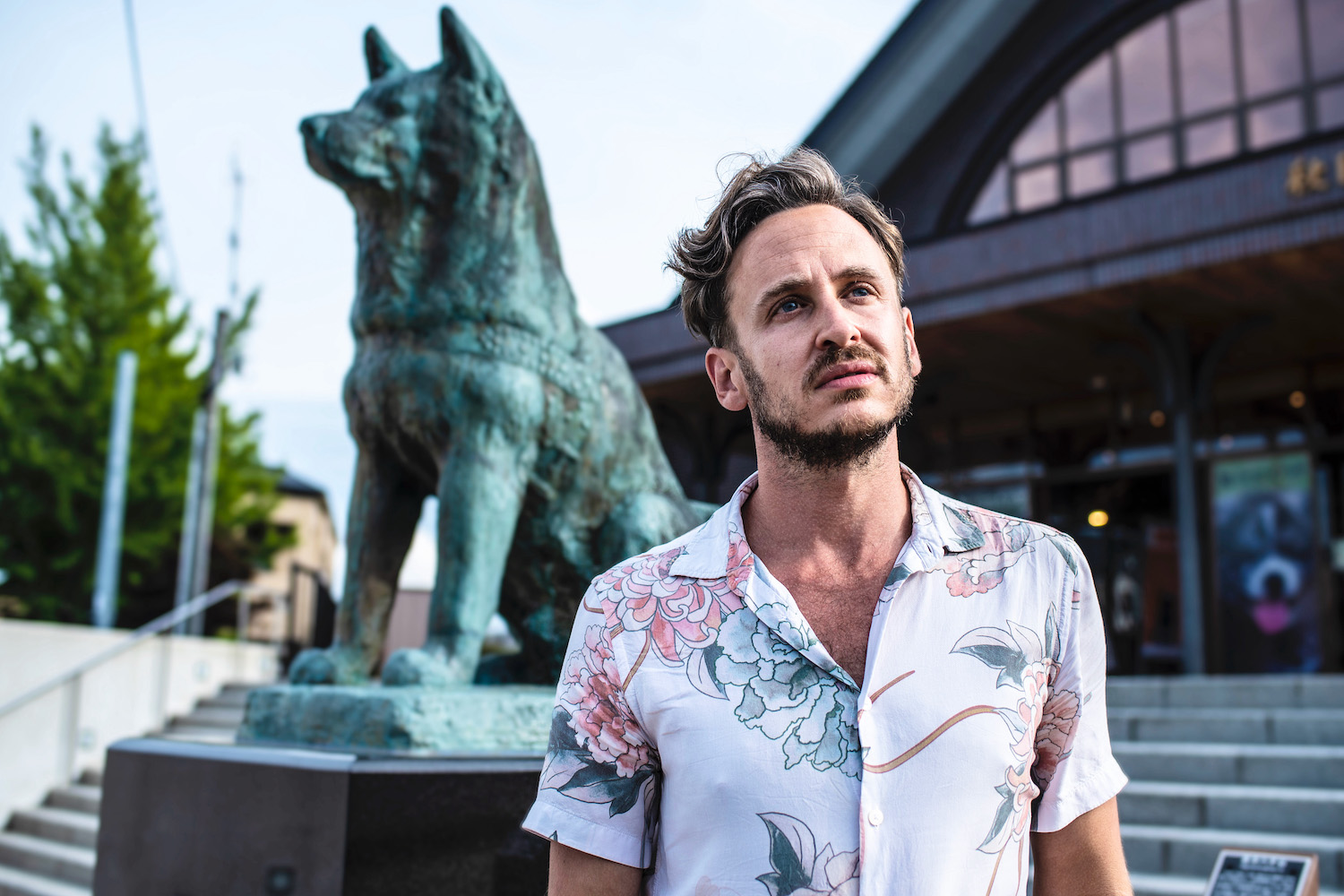
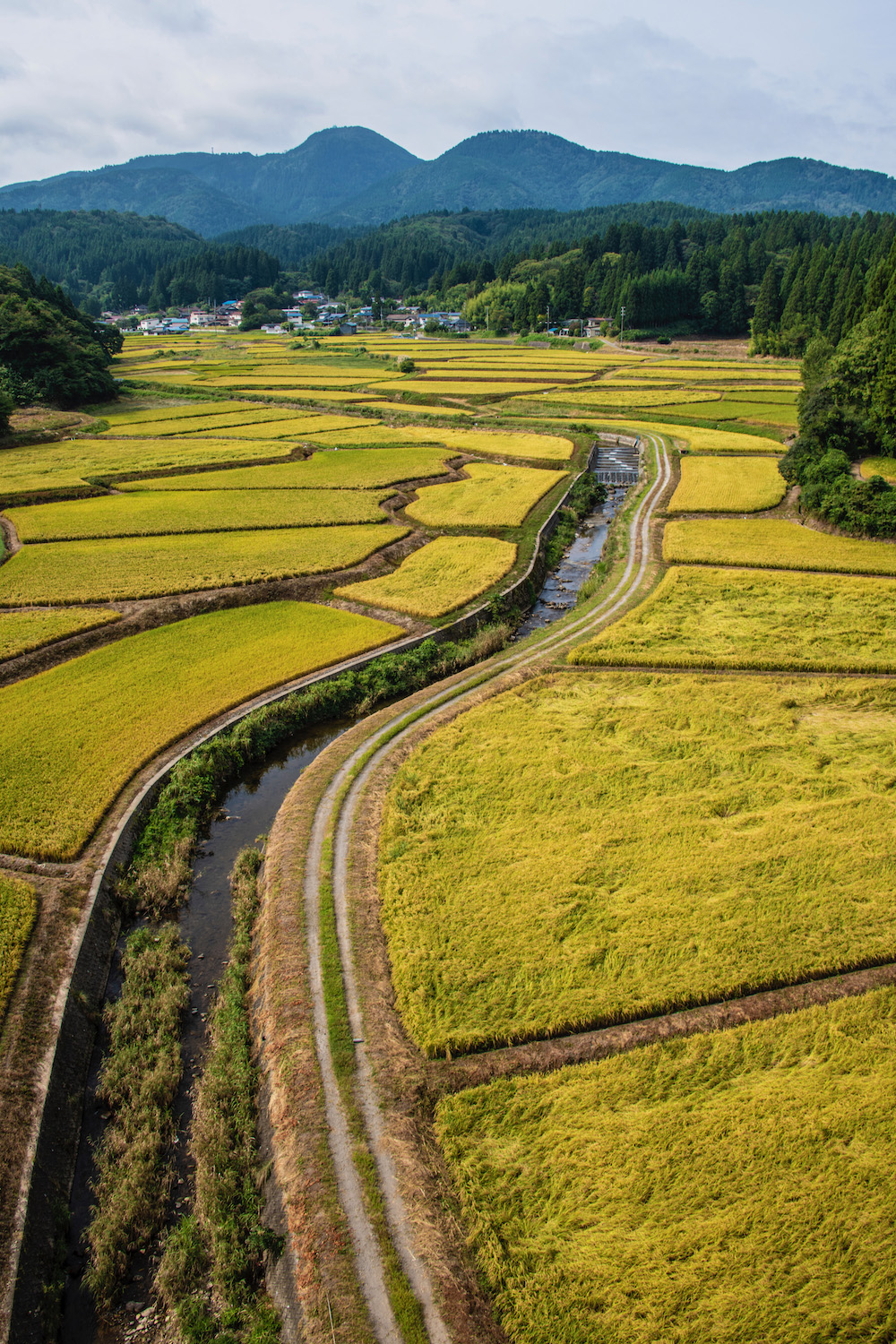
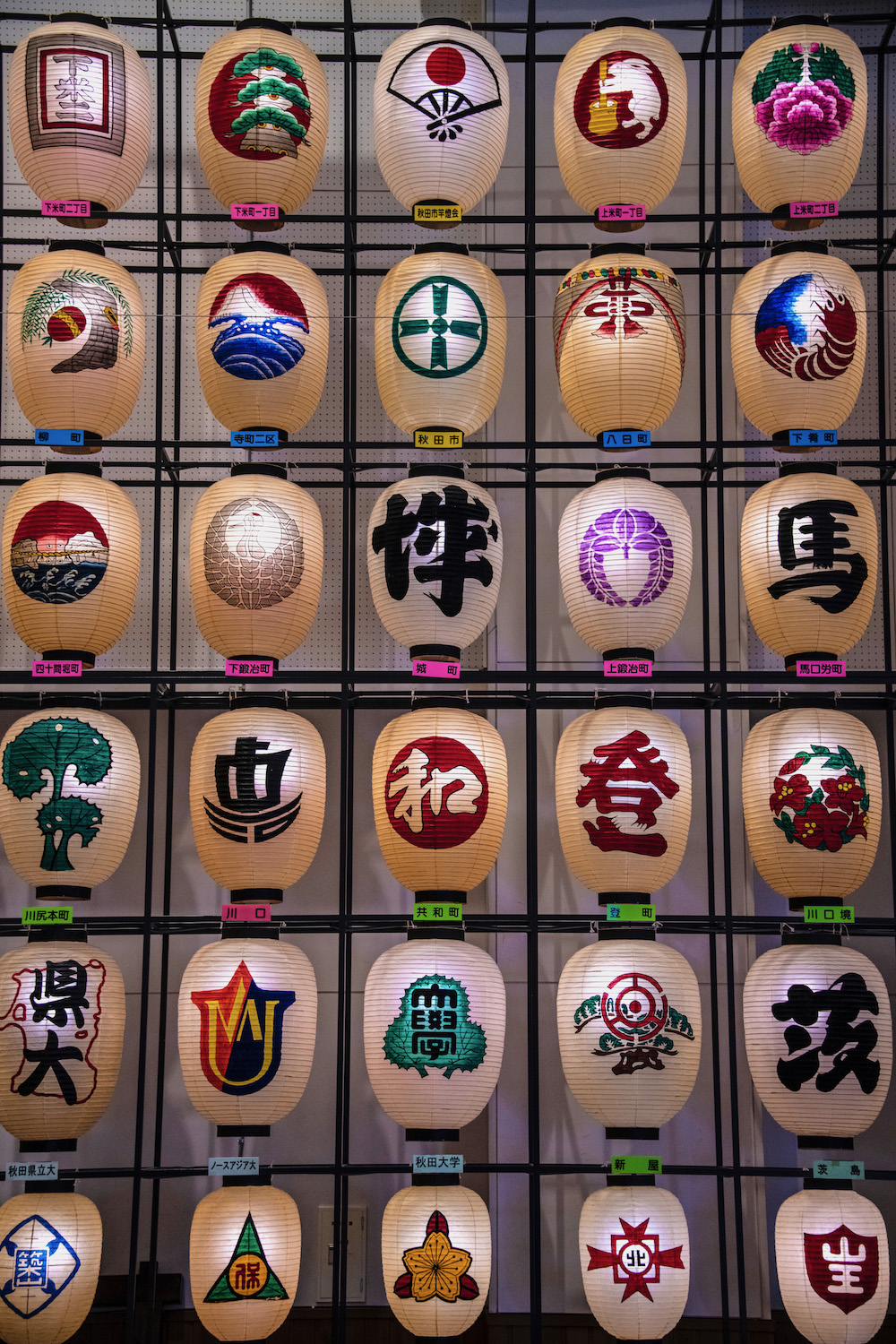
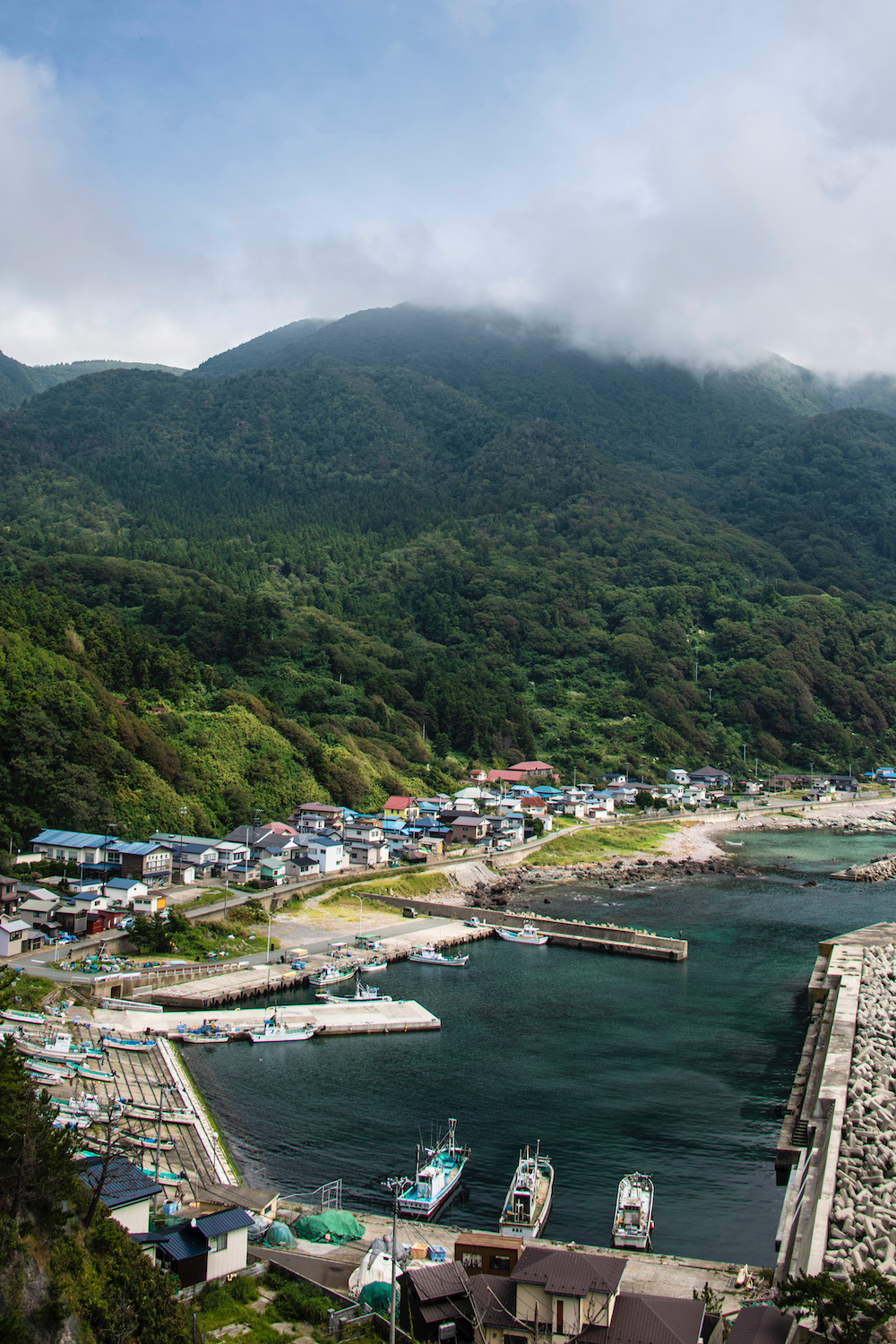
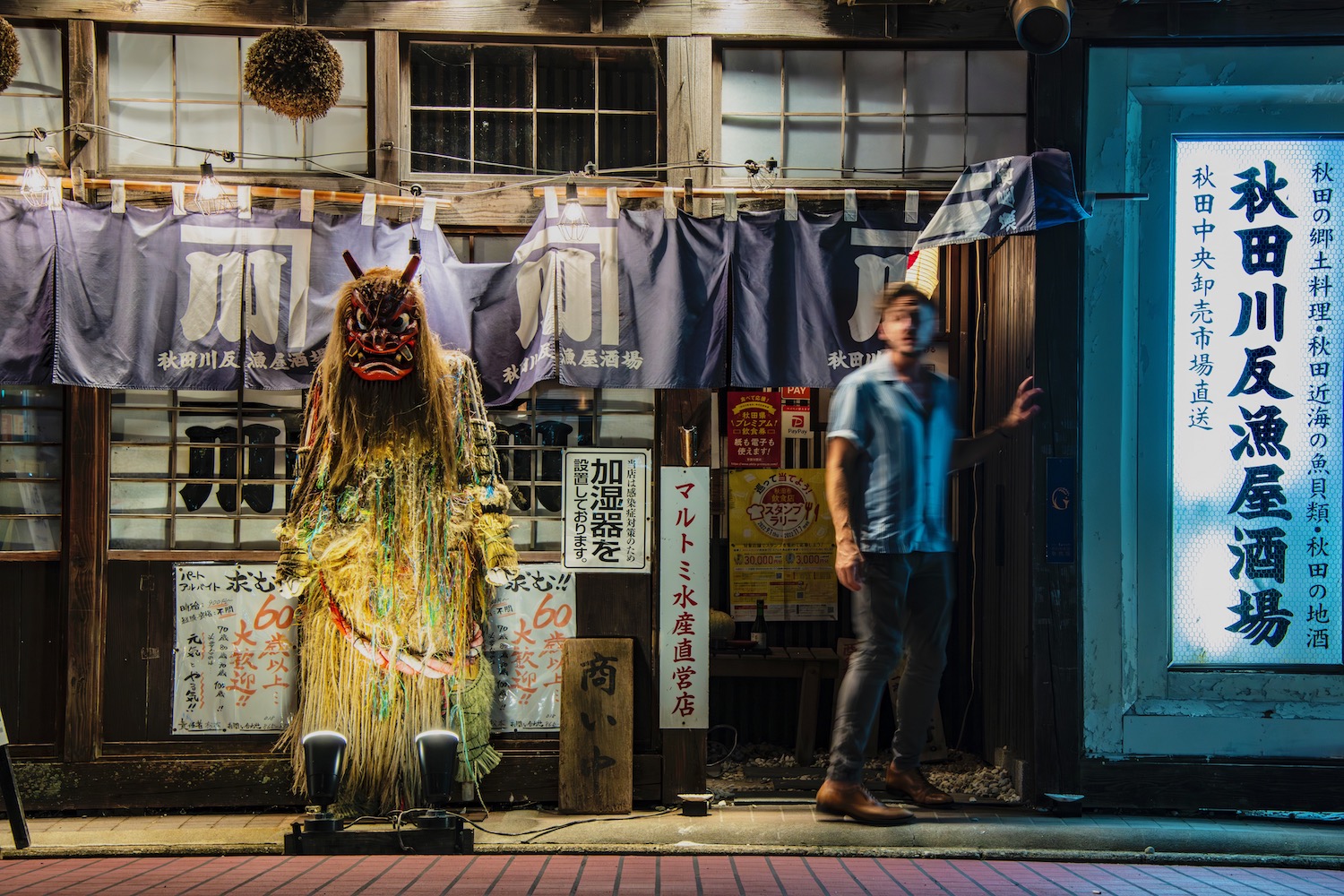
Although the pair of Maiko sat at the center of the stage, the shamisen player behind them held the keys to the performance. She kicked things off with several bars of syncopated, picked eighth notes, then transitioned to more of a strum once she started singing.
Her words were quotidian—some sort of welcome, if I understood correctly—but she sang them from her chest, and almost hypnotically. The others started dancing, but kept their mouths closed.
I’d arrived in Sakata, a once-important but now forgotten port city on the Sea of Japan coast, the day before. For reasons owing both to logistics and to my uncompromising Type A personality, I spent my first 24 hours mostly outside its historic center.
After starting just south of town at Yura Beach, where a scarlet bridge connects a coastal town to an island shrine, I headed inland into the sacred foothills that surround Mt. Chosei, the behemoth that towers over everything.
En route, I drove through seemingly endless fields of rice, which called to mind the city’s name: 酒田—sake fields. Sakata had laid its most conspicuous card on the table, though I had a feeling it was hiding a few up its sleeve.
The Geisha weren’t singing, at least not initially, but they weren’t silent either. Their feet, light as they were on them, produced the gentlest sort of percussion as they moved gracefully across the tatami, like when a drummer uses his brush on the snare. Behind them were hand-painted murals depicting Camelia flowers, whose essence wafted through the three-story tea house.
200 years ago, it had been an essential entertainment venue, hosting merchants and politicians and any other number of important men who would pass through Sakata, which back then was one Japan’s most important port cities.
As the two finally began to sing, high-pitched (which was by design) and out of tune (which clearly wasn’t), I wondered what sort of punishment such imperfection would’ve seen heaped upon them in Edo-era Japan.
(Certainly, it would’ve been worse than online criticism from a gaijin blogger during the fourth year of Reiwa.)
Actually, that’s not fair: I’m making an observation, not a criticism. I actually don’t have much criticism for Sakata, apart from the fact that it doesn’t have enough hotels, and that its historic area is a bit too far from the station for my liking.
These two facts are much of what’s holding it back from reaching its tourism potential. Well that and the ongoing border closure, another throwback to the Edo area.
My love for Sakata was immediate—and it was energizing. By the time I returned my rental car, having trekked to a five-story pagoda of Mt. Haguro and the towering Tamasudare Waterfall after visiting Yura Beach, I should’ve been ready for bed. Instead, fueled by a pack of erotic-looking (and erotically sweet) peaches I bought on a whim, I decided to end my day at the Sankyo-Soko Rice Storehouses, the city’s most conspicuous tourist attraction.
Well, apart from the lack of tourists. It was just me and the golden hour. And later the sunset, which took the form of a pink-orange gradient that looked suspiciously like peach flesh.
The Maiko got their act together during their second song, adding the click of castanets to the performance, which saw them both more in tune and more in sync with one another. By this point I was focused less on what they were saying—frankly, their voices were too high to understand—and more on the privilege of being able to enjoy this centuries-old art, no less at a fraction of what I’d have paid in Kyoto, and with only five other audience members present.
I was in my body—breathing in and out and in again—and in the moment. Irises adorned the coral-colored kimono of the one on the right—wait, now she’s on the left—while the deep spearmint garment her partner wore was accented with whole oranges and pomegranates shown in cross-section.
The zakuro reminded me of my walk through Sakata that morning. Having kicked the day off with a life-changing tuna donburi at the rustic port market, I added some spice to my life with a flight of Nihonshu at Sankyo-Soko, which was slightly busier but still mostly empty. More than a little buzzed, I’d zigzagged through town before arriving at Somaro, whose facade seemed to match the color of the bridge at Yura Beach the previous morning.
Entering into the hall to enjoy my pre-performance coffee, what struck me immediately (beyond the attention paid to hair, makeup, poise and posture) was the lack of masks. This made sense for the Geisha themselves, of course, though I was happy the woman who ended up playing shamisen didn’t have one on either.
Later on, as the trio neared the end of the third and final song, a sadness came over me. It was a subtle sadness, not consuming enough to pull me out of the moment fully, but it was affecting. When was the last time I saw the face of any Japanese person I encountered?
The scene in front of me had inadvertently mirrored the spectacle of the past 30 months, though I wasn’t watching kabuki. All the pain I’d gone through had been for show; I mean the border closures, mostly, but also the pathological masking that pacified the public enough not to question any of the reason of the korona taisaku.
Would the Japanese government, like the trio in Somaro, bow humbly before the world when the charade was finally over?
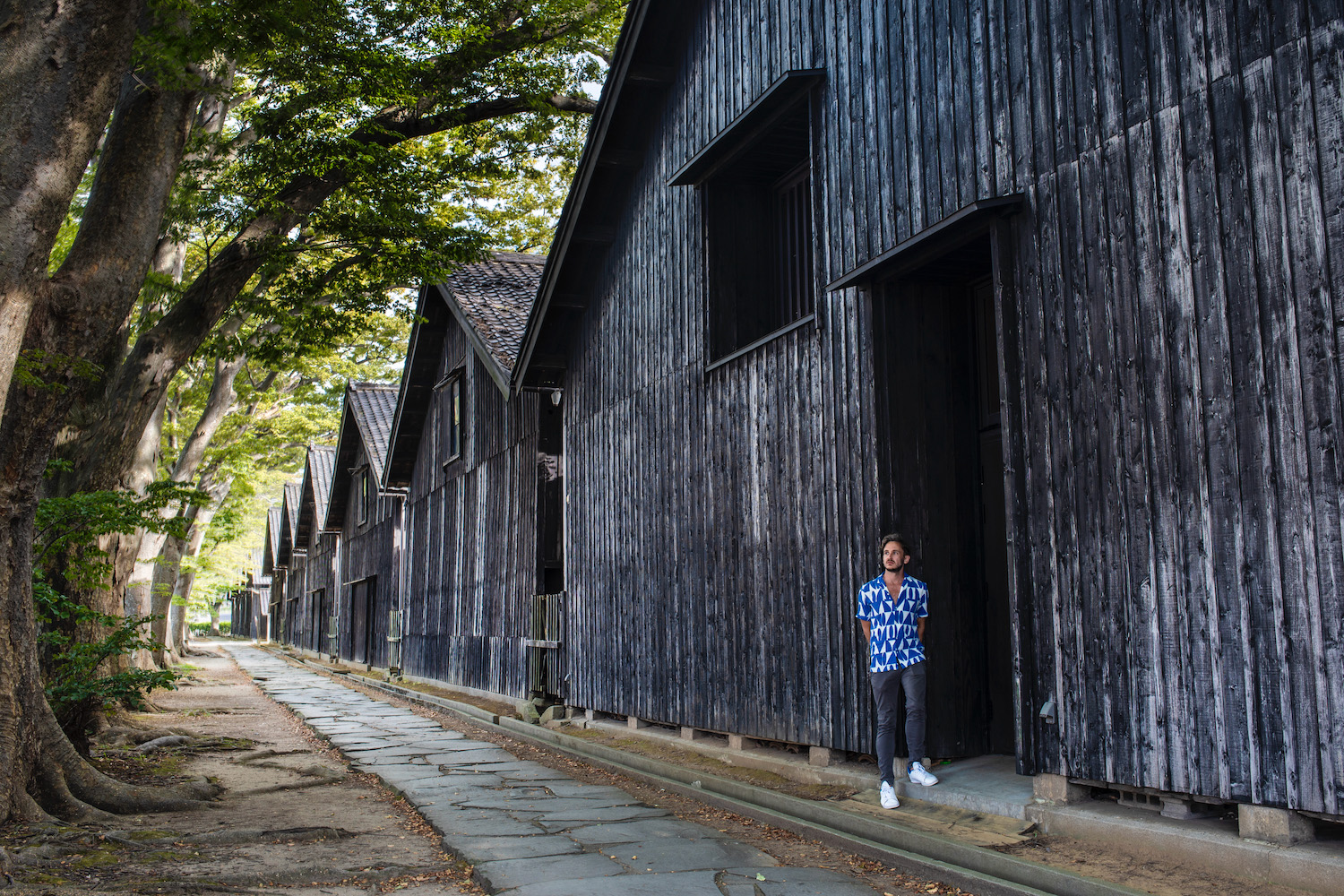
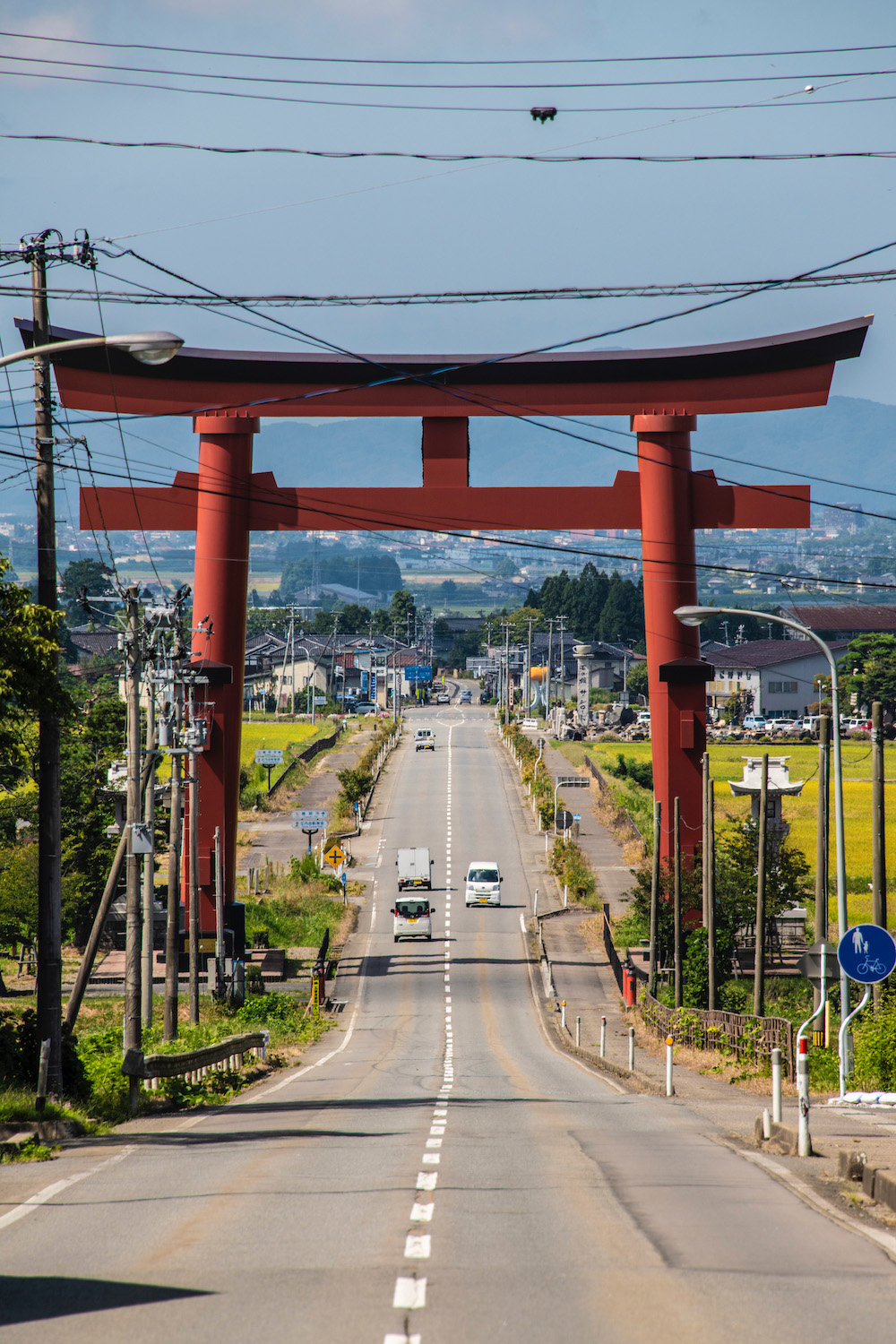
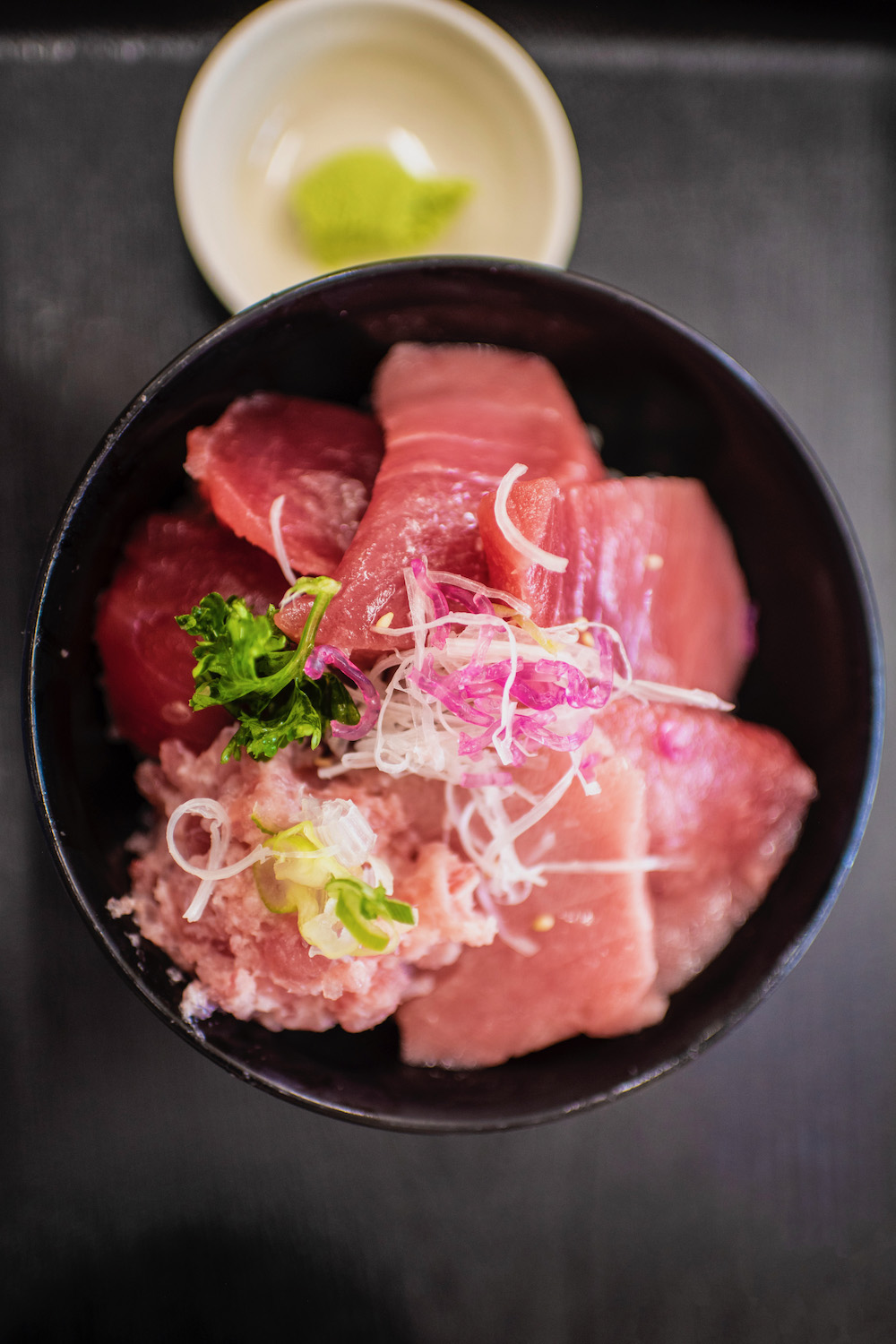
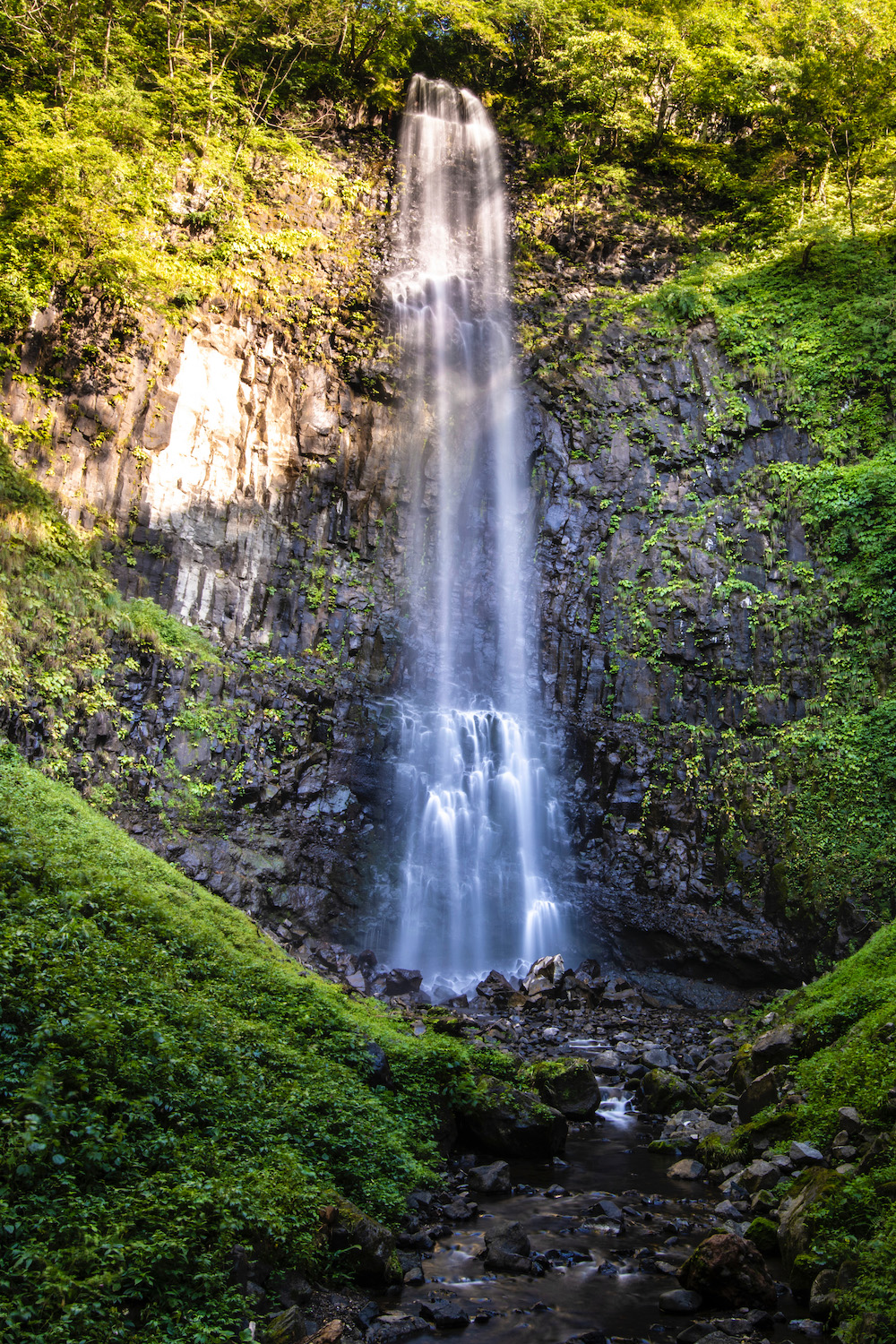
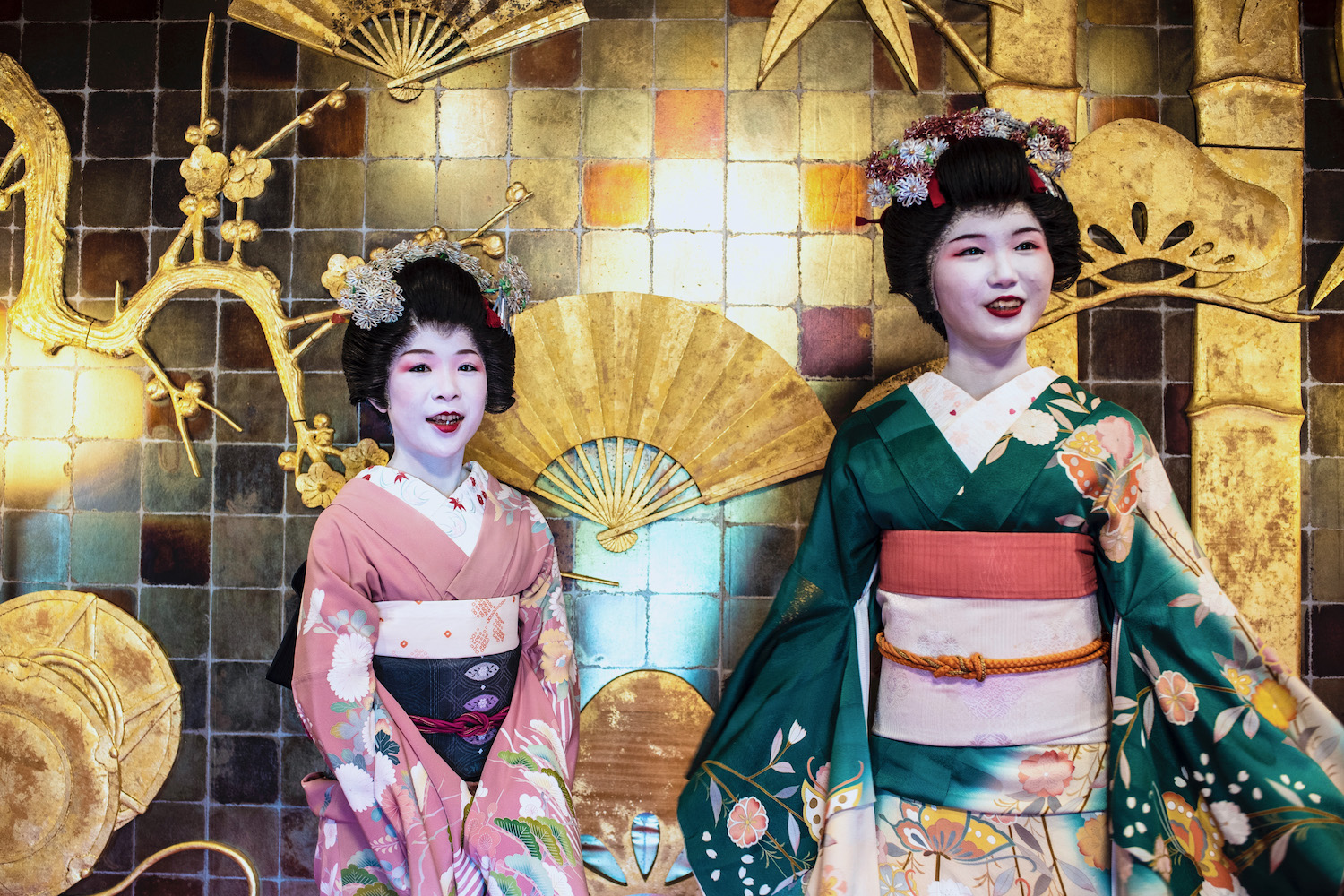
Kyoto will always be home to me, and yet I greatly prefer exploring the city as a tourist—it seems the feeling is mutual. Having flown to Osaka’s Itami Airport from Akita that morning, I had by 6 PM arrived on Ninenzaka slope, where I looked westward toward Yasaka Pagoda for the first time in over a year. The sunset was more vibrant than any I’d seen in more than six months living just steps from that spot.
Turns out, this was just the beginning of my Kyoto good fortune.
“I guess this really is a private dining experience,” a former classmate of mine concluded during the halfway point of our meal at a fancy Teppanyaki joint in Gion. In normal times, the place would’ve been packed to the gills; that night, it seemed like they opened just for us.
It was so quiet that I could hear the flapping of the lobster as it flopped around upon hitting the grill, though the chef assured me they were just delayed nerve impulses.
“Mou shinimashitaka?” I asked, seeking confirmation.
“Hai!” He answered definitively, and flipped the creature over on its shell. It was now a deep red, not unlike the hue of many Japanese torii and bridges; the flesh that had just seconds earlier looked slimy and translucent was white and fluffy and matte.
After dinner, during which I learned my friend had just begun an ambitious career as a Samurai sword trader, we walked through Gion’s once-busting Shinbashi-dori, which was eerily quiet on a Friday night, apart from a tour group of about 100 teenagers, still in their school uniforms (and thankfully with several adult chaperones).
I mean, not that any shenanigans were going on in the heart of Kyoto’s most famous Geisha district. None of the other passers-by were obvious Yakuza members; the only Maiko I saw was on the second floor of one of the Machiya above the bend in Shirakawa Canal; I only spotted her because of my eagle eye.
“I think she saw you too,” my classmate laughed as she started posing for my camera. The shot ended up blurry—I guess it served me right.
The next morning, I met another former study buddy for coffee and shortly thereafter, because I wanted a Highball (and not the canned konbini kind), to the new Kura outlet in the Sanjo Meitengai shopping arcade, which was clearly getting ready for Japan’s imminent reopening. This shiny kaitenzushi was one of so many new developments within the covered street that both of us lost count.
Not that we wasted too much energy on such matters, even if they were always in the background of my thoughts.
This classmate, unlike my other one, was just days from leaving Japan. He’d explored a few different avenues for staying but, having stumbled upon a golden opportunity in his native Italy, decided to make a practical choice instead an emotional one.
“I knew it was time to walk away,” he said, with a certitude that reminded me of how clear my own decision had been over a year earlier, vowing to return to Japan again as soon as he could.
(Luckily for him, he’d only have to wait 14 days for Japan to reopen, rather than the 14 months I did.)
Clouds had covered the sky by the time we emerged up to street level, but not just any clouds: The outer bands of a typhoon were slowing rolling in.
“Be safe today, Robato-san,” my classmate had said after we hugged goodbye and just before the bus door closed.

His caution had not necessarily been unfounded. I was on my way to Kobe’s Maiko Station, where I’d be attended a karaage festival with my friend Eriko, with whom I’d be close since we met in Bangkok a decade earlier.
On any other day, the festival taking place right on the sea beneath the Akashi Kaikyo Bridge would’ve been a selling point; today, it seemed borderline reckless, even if neither of us paid it any mind until our spent edamame shells launched through the air at gale force.
Eriko, as always, had amazing humor about the situation, laughing and fake-screaming as the jazz band on the stage behind us played an instrumental version of Stevie Wonder’s “Isn’t She Lovely.” Wanting to flee the weather, which seemed imminent, we ducked inside the nearby Bridge Museum, where we watched a film illustrating the insane scale of the bridge’s construction in 90s-style 3D.
We followed this up with cake and coffee at a shopping mall cafe with a view of the bridge, during which we ascertained it would probably be safe to return to where we’d been for sunset, whatever form that ended up taking on a grey day like today. Some color did end up fluorescing above Awaji Island, and finally between the cables of the bridge itself.
During our meeting, we determined that our next rendezvous would take place in November, when we’d explore the north-central part of Hyogo prefecture using a car Eriko had recently acquired. After our formal goodbye, she stood across the platform waving at me, eventually disappearing behind the carriages of a train as it sped into the station.
Just before walking inside to brace for the long journey back to Kyoto, a poster on the platform caught my eye. It was advertising some kind of art show, although I didn’t have enough time to be able to glean any meaning from the Japanese characters.
It bore just one English phrase: “Living multiple selves.”
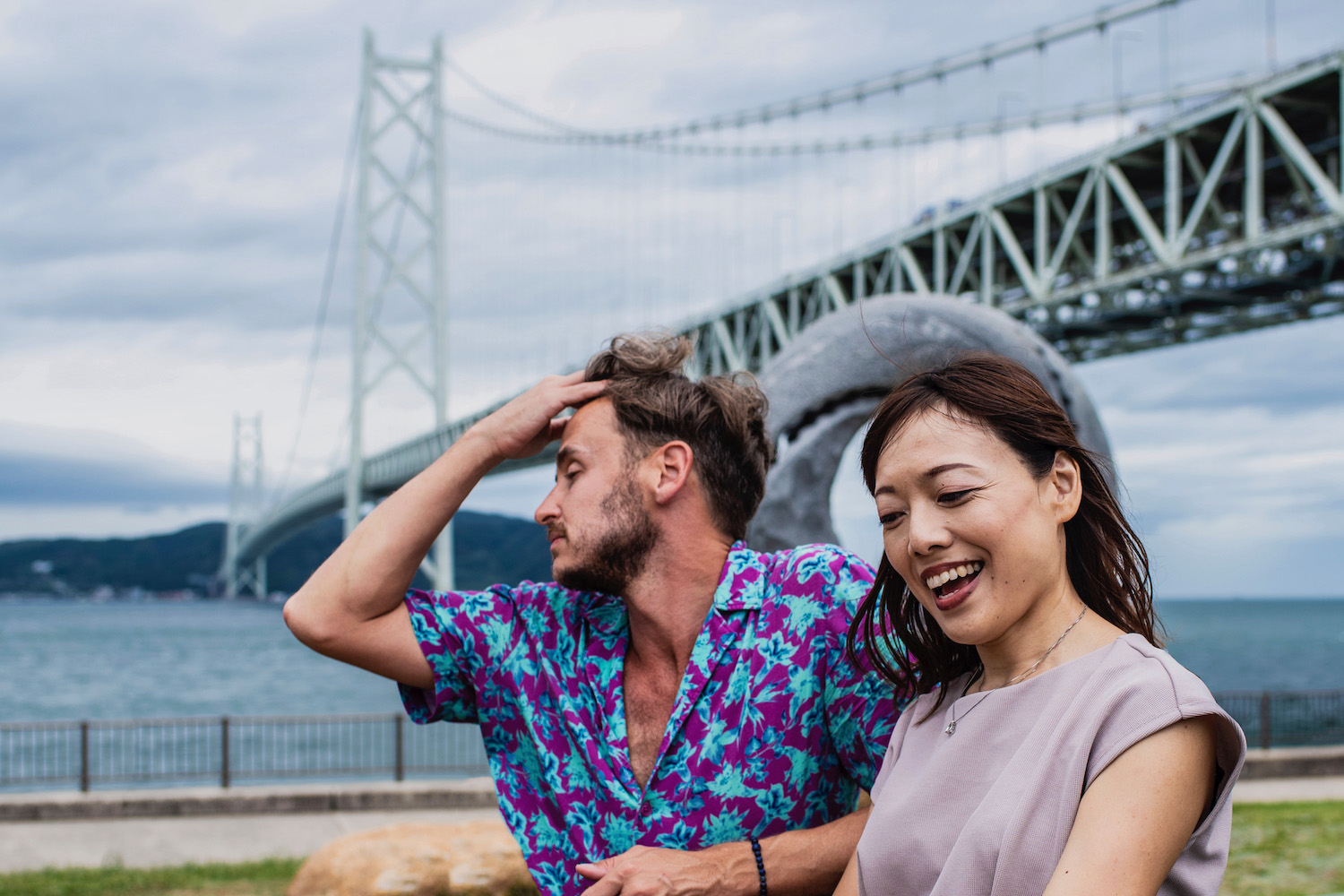
Originally, my plan had been to leave Kyoto Monday morning and spend a night in Hamamatsu, a city in Shizuoka prefecture I’ve never visited but always been curious about. The city is home to the largest physical manifestation of the Heart Sutra, a Buddhist text that reckons with the dissonance between human perception and universal reality.
I decided against it at the last minute, although I can’t fully blame the typhoon for this. I’d spent Sunday amid the tea fields of Wazuka town just east of Kyoto city; neither my friend and business associate Kotaro nor I had been terribly concerned about the imminent winds and rain, even if humidity was oppressive.
After hiking up to a stunning viewpoint, we cooled off with cold-brewed local tea—him matcha and me hojicha. When the topic turned to how he’d be spending his afternoon, I was surprised to learn he’d be giving a sake tour, which was actually how I’d met him nearly four years earlier.
“They’re just business visitors,” he clarified, “as most of our guests recently have been. But future bookings have accelerated since rumors of reopening have begun.”
“I hope it’s real this time,” he said with resignation, as vulnerable as a young tea shoot in a tropical cyclone.
I sipped down the rest of my roasted green tea, and nodded understandingly. “I think it is.”

I spent my last evening in Kyoto—my last evening in Japan, for now—at the unassuming Teishoku not far from the riverside Airbnb I called home during the first two months I lived here. Although staff told me the restaurant would be closing soon, on account of the typhoon on the brink of blowing in, I ate slowly and mindfully.
As always, I started by breaking the egg yolk and stirring it together with the portion of the misokatsu sauce that hadn’t stayed stuck to the cutlet. Spooning this over the slightly undercooked potato wedges so they could soak in it, I moved on to the tofu, which I doused in so much soy sauce the scallions atop it fell down into its dish.
I then put down my utensils, taking a second to enjoy the melancholy jazz music playing at a volume perfect for the dim, yellow lighting of the dining room. I then took my first sip of the Japanese whisky Highball I’d ordered, which up to that point had been neglected.
I spent the next morning—my last morning in Japan, for now—within Sagano Bamboo Groove, which more on account of the passing typhoon than the not-quite-open-yet borders was empty. Well, that and the fact that I arrived before 7 am.
Apart from my breathing and the occasional sloshing of bicycle wheels on the small puddles left here and there, there only sound was the rustling of the leaves and the clanking of the hollow reeds against one another. It was a perfect foil to the cacophony that would surround me as I stood on the platform on Shinagawa Station hours later, where countless Japanese-language train announcements competed with one another for attention.
Will this be the last time I hear Japanese again for weeks? I panicked silently, realizing that my trip was nearly over. For months?
Fear of getting locked out again chilled me, in the way I guessed the leftover typhoon winds whipping outside the windows of the Narita Express might, if I’d been able to feel them. The scenery they lashed. was both familiar—how many dozens of times had I passed it?—and foreign, at the same time: I’d last departed Japan via Narita in April 2019 as far as I could remember.
Security and immigration were quick, but not painless. A facial recognition AI had shepherded both of the gates required to exit Japan; without a sentient sayonara echoing the human yokoso I’d received upon being stamped into Japan almost two weeks ago, it almost felt like I wasn’t leaving.
I opened my phone to see a notification that Prime Minister Kishida had just departed for the United States, where he was expected to announce Japan’s full reopening at a meeting of the New York Stock Exchange on Wednesday or Thursday.
The plane took off and Japan disappeared beneath me—but not for long, not this time.
Other FAQ About Visiting Japan After Covid-19
Has Japan reopened to tourism?
Japan will fully reopen to tourism in October 2022, after many false starts. Citizens of most countries be able to enter visa-free, and without the need to test or quarantine, in most cases.
Do people still wear masks in Japan?
Masking was relatively ubiquitous in Japan before covid-19, but became basically universal during the pandemic. In late 2022, even as most of the world gets back to normal, virtually 100% of Japanese people wear masks virtually 100% of the time, including while by themselves in their own cars and homes.
Can I visit Japan right now?
By the time you read this, Japan will likely have removed the last of its pandemic-era travel restrictions. However, for the 30 months between April 2020 and October 2022, basically all foreigners (and 100% of foreign tourists) were banned from entering Japan.



